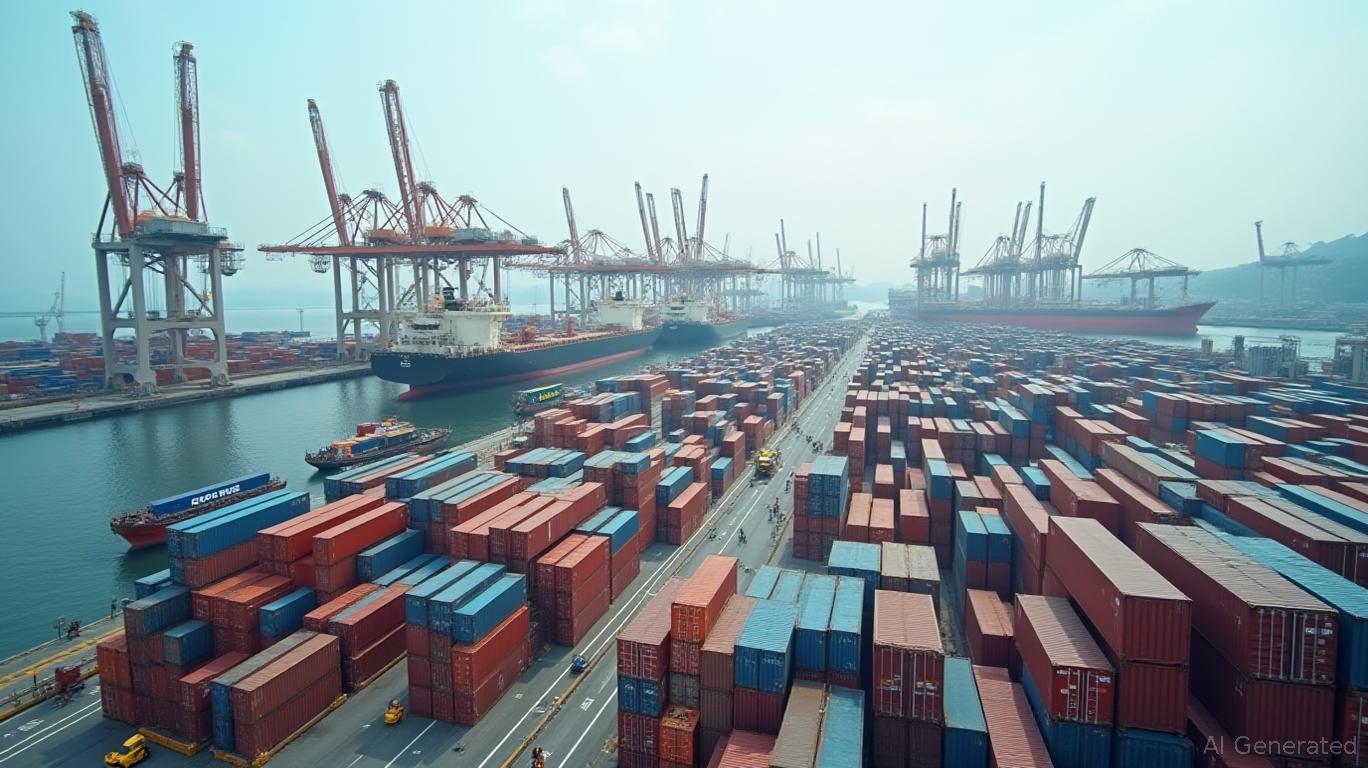Navigating Trade Turbulence: Finding Value in Resilient Sectors Amid Global Slowdown
The global economy is navigating choppy waters. Trade disruptions, tariffs, and policy uncertainty are weighing on growth, with the U.S. GDP projected to slump to 1.6% in 2025—the weakest pace since the 2008 financial crisis. But beneath the macroeconomic headwinds lie opportunities for investors to capitalize on sectors insulated from the storm. By focusing on industries that benefit from resilience-driven strategies, investors can position themselves to outperform in a fragmented world.
Logistics: The Unsung Heroes of Supply Chain Resilience

Trade barriers have turned supply chains into a high-stakes game of rerouting and efficiency. Maritime disruptions, like the Suez Canal blockage, cost $9.6 billion annually, but they've also created demand for companies that can navigate these challenges. Logistics firms with diversified networks and tech-driven solutions are emerging as critical players.
The OECD highlights that maritime bottlenecks have forced businesses to rethink their supply chains, favoring firms with agility. shows that logistics stocks have underperformed broader markets amid trade fears—a sign of undervaluation. Look to companies with expertise in last-mile delivery, global freight coordination, or digital supply chain platforms.
Domestic Manufacturing: Rebuilding Local Muscle
U.S. tariffs aim to shift production closer to home, creating tailwinds for sectors like EV batteries and semiconductors. While global trade wars hurt exporters, domestic manufacturers with minimal reliance on imports stand to gain.
The OECD notes that relocalization poses economic costs but also opportunities for sectors with strategic importance. U.S. semiconductor companies, for instance, are benefiting from government subsidies and reduced reliance on Asian suppliers. reveals that these stocks have underperformed Asian rivals, offering a valuation gap.
Investors should prioritize firms with:
- Government support: Companies eligible for the CHIPS Act funding or Inflation Reduction Act incentives.
- Diversified supply chains: Firms that source critical materials domestically or through non-sanctioned regions.
Tech and Digital Infrastructure: The New Growth Engine
The OECD underscores that digitalization is key to resilience. Sectors like cybersecurity, cloud infrastructure, and industrial automation are critical to reducing supply chain vulnerabilities.
illustrates how tech-driven services have outperformed goods-based industries in recent years. Look to cybersecurity firms (e.g., CrowdStrike), cloud infrastructure providers (e.g., AWS), and automation specialists (e.g., Rockwell Automation). These companies are less exposed to trade tariffs and benefit from rising demand for data security and digital transformation.
Services: The Soft Landing in a Hard World
The World Bank reports that services trade grew 9% in 2023, outpacing goods. Sectors like healthcare, education, and IT services face fewer tariff barriers and are less dependent on global logistics.
Healthcare services, particularly telemedicine and diagnostics, are ripe for investment. The sector's resilience is reflected in , which show it trades at a discount to its pre-pandemic premium—a sign of undervaluation.
Risks and the Case for Caution
Investors must acknowledge risks: further tariff hikes or geopolitical flare-ups could disrupt even resilient sectors. However, the World Bank's warning that global growth could be the slowest since the 1960s without policy fixes makes resilience-driven investments a necessity, not a luxury.
The Bottom Line: Build a Resilience Portfolio
- Allocate to logistics and supply chain firms: Focus on ETFs like IYT or names with global reach (e.g., FedEx, UPS).
- Target domestic manufacturers: Look for U.S.-based EV battery producers (e.g., Tesla's suppliers) or semiconductor firms with CHIPS Act eligibility.
- Embrace tech and services: Consider cybersecurity stocks or healthcare ETFs.
The trade war era demands a strategic shift toward sectors that thrive in uncertainty. As the OECD and World Bank emphasize, resilience isn't just about surviving—it's about positioning to lead when the fog clears.
Ben Levisohn
June 6, 2025

Comments
No comments yet